💪 Support independent web, support us:
There are great many things to do in Italy, and so are in Paestum.
Beneath the shimmering Italian sun, lies an ancient wonder of mythical proportions.
Paestum, a city of ruins, beckons you to immerse yourself in its rich history, stroll through its sprawling temples, and bask in the glory of its past.
Come wander the paths of this forgotten city, and uncover your own treasures amongst the ancient artifacts of a time long past.
Without further ado listed below are some of the most fun things to do in Paestum:
1. Temple of Athena
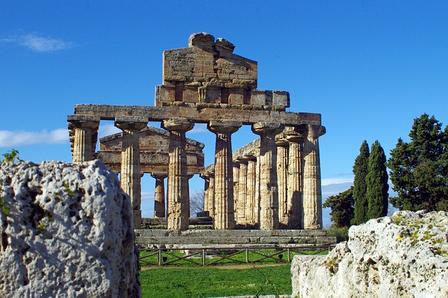
The Temple of Athena is an ancient Greek temple located in Paestum, Italy, built in the 6th century BC.
What to see or do: The temple is an impressive structure made entirely of local sandstone, with 34 well-preserved Doric columns and a pediment displaying reliefs of mythological scenes.
Visitors can admire the symmetry and balance of the architecture, paying attention to the details that make it a masterpiece.
Don’t miss: Don’t miss a guided tour or an audio guide to fully appreciate the history and significance of the temple.
Make sure to take a stroll around the archaeological site and explore nearby temples, the amphitheater, and the museum where you can see some of the artifacts that have been discovered in the area.
Insider travel tips: To avoid the crowds, it’s best to visit early in the morning or later in the afternoon. Wear comfortable walking shoes and bring water as it can get hot during the summer months.
Additionally, make time to take a walk by the nearby beach, which offers a stunning view of the temple and the Mediterranean Sea.
2. Temple of Neptune
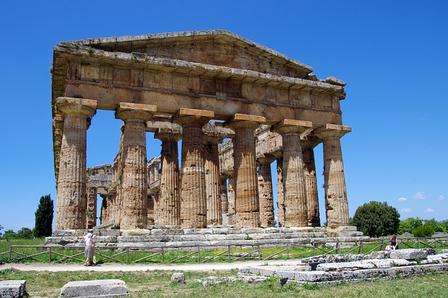
The Temple of Neptune is one of three ancient Greek temples in Paestum, Italy.
Built around 460-450 BCE, it is a magnificent example of Doric architecture and considered one of the best-preserved examples of ancient Greek temples.
What to see or do: Visitors can admire the impressive columns and pediments of the temple, which are adorned with intricate carvings depicting scenes from Greek mythology.
The interior of the temple is not accessible to the public, but the exterior offers stunning photo opportunities and a glimpse into the ancient past.
Don’t miss: Be sure to take a close look at the carvings on the metopes (rectangular blocks between the triglyphs) and the frieze, which depicts a procession of people, animals, and mythical creatures.
Also, don’t miss the adjacent Temple of Hera, which is equally impressive.
Insider travel tips: – Visit early in the morning or later in the afternoon to avoid the crowds and take advantage of the beautiful light for photos.
3. Tomb of the Diver
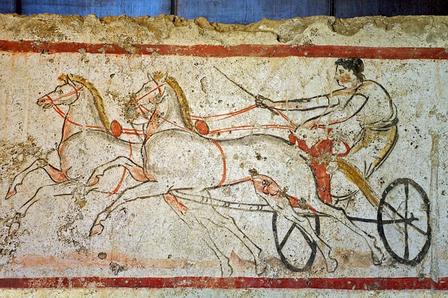
An ancient Greek tomb located in Paestum, Italy.
What to see or do: Marvel at the beautiful frescoes depicting scenes from Greek mythology covering the interior walls of the tomb.
Admire the unique architecture of the tomb, which features a small diving figure on its roof, believed to represent the soul of the deceased.
Don’t miss: Taking a guided tour to learn more about the tomb’s history and the significance of its frescoes.
Insider travel tips: Visit in the early morning or late afternoon to avoid the crowds and take advantage of the cooler temperatures.
Consider combining your visit to the Tomb of the Diver with a trip to the nearby Paestum Archaeological Site to learn more about the ancient Greek city.
4. Paestum Archaeological Museum
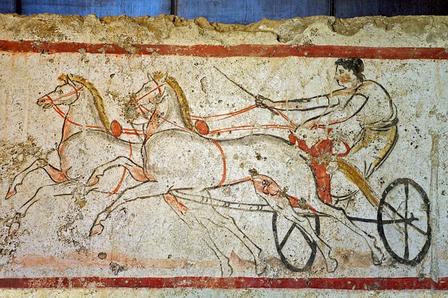
Paestum Archaeological Museum is a museum located in the town of Paestum, Italy, which houses artifacts from the ancient Greek city of Poseidonia and the Roman city of Paestum.
What to see or do: The museum houses a vast collection of artifacts including bronze objects, ancient coins, pottery, and the famous “Tomb of the Diver” frescoes.
Visitors can also explore the various exhibits that showcase the history and culture of the ancient Greek and Roman civilizations that inhabited the area.
Don’t miss: The highlight of the Paestum Archaeological Museum is the Tomb of the Diver, a fifth-century BC frescoed tomb that depicts a young man diving into the sea.
The tomb is one of the few examples of ancient Greek painting that has survived through the ages and is considered one of the most important discoveries in the history of ancient Greek art.
Insider travel tips: Make sure to wear comfortable shoes as the museum covers a large area.
5. Forum
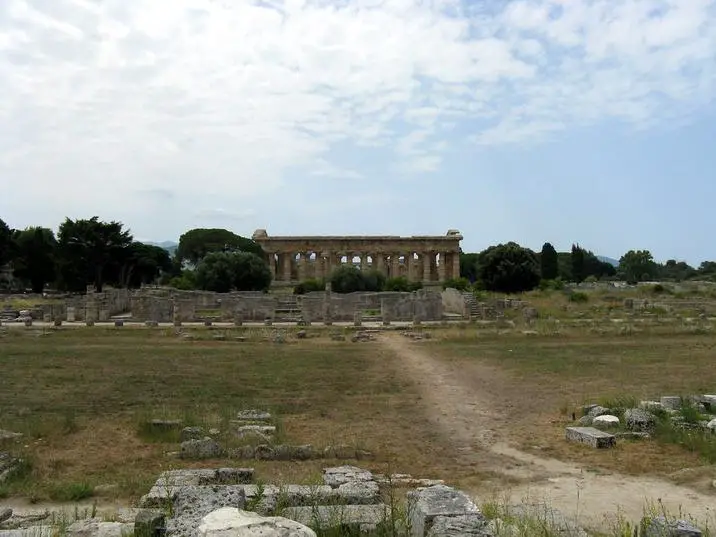
Forum area in Paestum, an ancient Greek city in southern Italy.
What to see or do: Explore the ruins of the Forum, which was the central public space of the city.
Admire the remains of grandiose buildings, such as the basilica, the temple of Apollo, and the curia, where the city council met.
Take a stroll among the ruins of the market, the shops, and the other public buildings that surrounded the Forum.
Don’t miss: The chance to admire the intact columns of the temple of Neptune, which is one of the best-preserved Doric temples in the world.
The columns reach a height of 18 meters and are made of travertine stone from nearby quarries.
The temple was built in the 5th century BC, dedicated to the god of the sea, and it was only partially destroyed by an earthquake in the 18th century.
Insider travel tips: Wear comfortable shoes and bring sunscreen, as the area is open to the sun and there is not much shade. Don’t forget to visit the nearby archaeological museum, which houses many fascinating artefacts from the city’s past.
Avoid the midday heat and crowds by visiting early in the morning or late in the afternoon.
6. Paleochristian Church
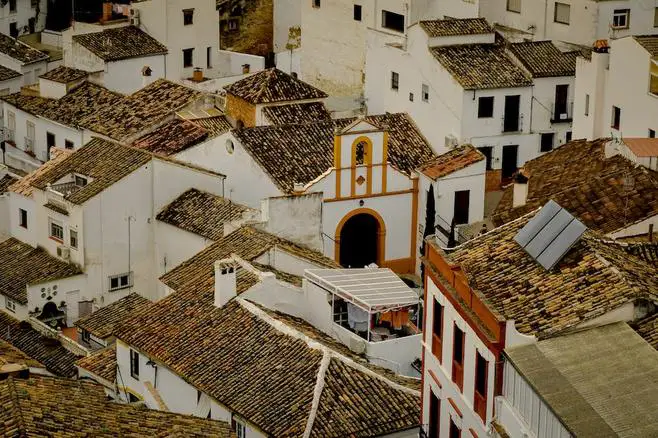
The Paleochristian Church is an ancient Christian church located in the archeological site of Paestum, Italy.
What to see or do: The church features beautiful frescoes dating back to the 4th century AD, depicting scenes from the Bible and early Christian life.
Visitors can also explore the surrounding archaeological site, which includes well-preserved temples and ruins from the ancient Greek city of Poseidonia.
Don’t miss: Make sure to admire the intricate fresco paintings on the walls and the carefully crafted architecture of the church.
Insider travel tips: To avoid the crowds, it’s best to visit early in the morning or later in the afternoon. Also, consider hiring a local guide to gain deeper insights into the historical significance of the site.
Don’t forget to wear comfortable shoes, as there is a lot of walking involved.
7. Amphitheater
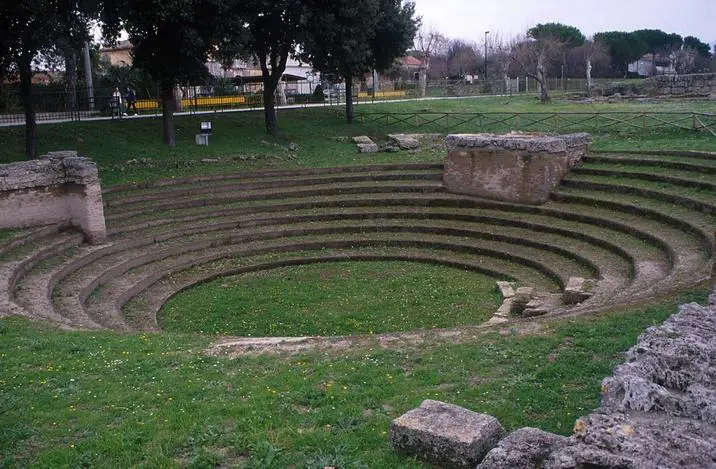
An ancient Greek amphitheater located in Paestum, Italy.
What to see or do: Marvel at the beautifully preserved ruins of the amphitheater while taking in the stunning natural scenery of the surrounding mountains and the Mediterranean Sea.
Don’t miss: The opportunity to learn about the history and architecture of the ancient Greek amphitheater, which was built in the 6th century BC.
Insider travel tips: – Make sure to bring comfortable walking shoes, as the terrain around the amphitheater can be uneven.
8. House of the Diver

The House of the Diver is an archaeological site located in Paestum, Italy, which was inhabited by Greek colonizers in the 5th century BC.
What to see or do: Visitors can explore the well-preserved ruins of the ancient Greek dwelling, including the intricate mosaic floors and frescoed walls. The site also offers a glimpse into daily life during ancient Greek times.
Don’t miss: The centerpiece of the House of the Diver is a stunning mosaic depicting a young diver poised mid-air, seemingly suspended in time.
This exceptional artwork is one of the few examples of Greek art that focuses on human movement.
Insider travel tips: Be sure to wear comfortable shoes, as the house is spread out over several levels and visitors need to climb stairs to see the entire site.
To avoid crowds, arrive early in the morning or later in the afternoon. Also, consider hiring a guide to learn more about the fascinating history of the House of the Diver.
9. Sanctuary of the Madonna del Granato

The Sanctuary of the Madonna del Granato is a beautiful church located in Paestum, Italy.
What to see or do: Visitors can admire the stunning architecture of the church, including the intricate details of the exterior façade and the beautiful paintings and sculptures inside.
Don’t miss: Make sure not to miss the opportunity to visit the crypt beneath the church, which has a unique and ancient charm all its own.
Insider travel tips: The best time to visit the sanctuary is during the summer months, when the surrounding gardens are in full bloom and the weather is perfect for a leisurely stroll through the grounds.
Don’t forget to bring your camera to capture the stunning beauty of this hidden gem!
10. Porta Sirena
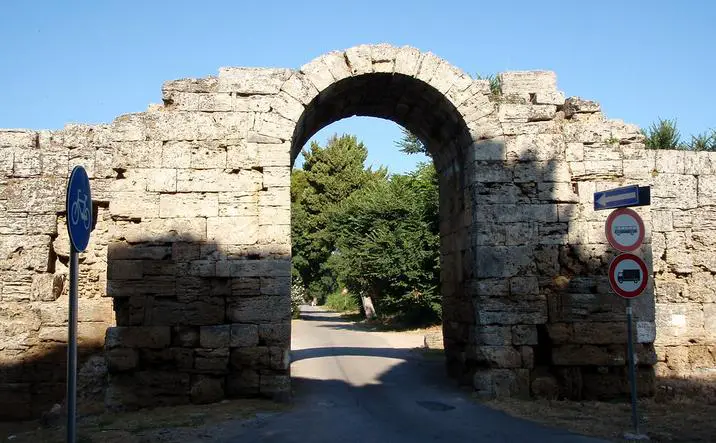
Porta Sirena is a well-preserved ancient gate and part of the ancient Greek city walls of Paestum, located in the Campania region of Italy.
What to see or do: Visitors can admire the impressive structure of the gate, which was built in the 4th century BC and features a beautiful relief of a siren on the architrave.
Take in the stunning views of the surrounding countryside and the nearby temples of Hera and Neptune.
Don’t miss: Make sure to take some time to appreciate the intricate details of the sculpture on the gate, including the intricate feathers and wings of the siren.
Insider travel tips: – Arrive early in the day to avoid crowds and enjoy the tranquil surroundings.
11. Necropolis of Gaudo
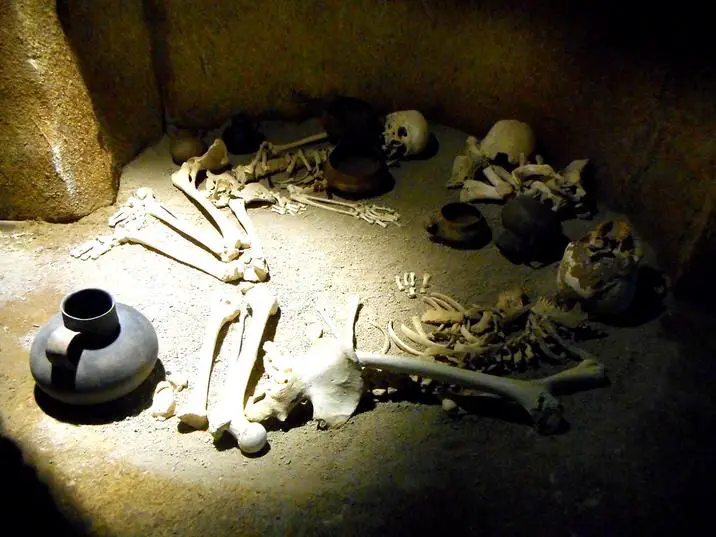
A burial site from the 4th and 3rd centuries BC located in Paestum, Italy, near the ancient Greek city of Poseidonia.
What to see or do: Explore the underground tombs featuring intricate frescoes depicting scenes from daily life and the afterlife.
Don’t miss: The Tomb of the Diver, a unique tomb with a fresco of a diver in mid-air, the only known example of Greek wall painting depicting an event from real life.
Insider travel tips: – Visit in the morning or late afternoon to avoid the hottest part of the day.
12. Santa Venere Thermal Baths

Santa Venere Thermal Baths is a wellness center located in the town of Capaccio, near Paestum in Southern Italy.
What to see or do: Visitors can enjoy a range of spa treatments, including thermal baths, a sauna, Turkish bath, and relaxation rooms.
Don’t miss: Don’t miss the opportunity to experience the natural thermal waters that the center is known for, filled with therapeutic minerals for a truly restorative experience.
Insider travel tips: It is recommended to book a treatment or session in advance, especially during peak tourist season. The center also offers packages that include food and accommodations for a complete wellness retreat.
13. Capaccio-Paestum train station
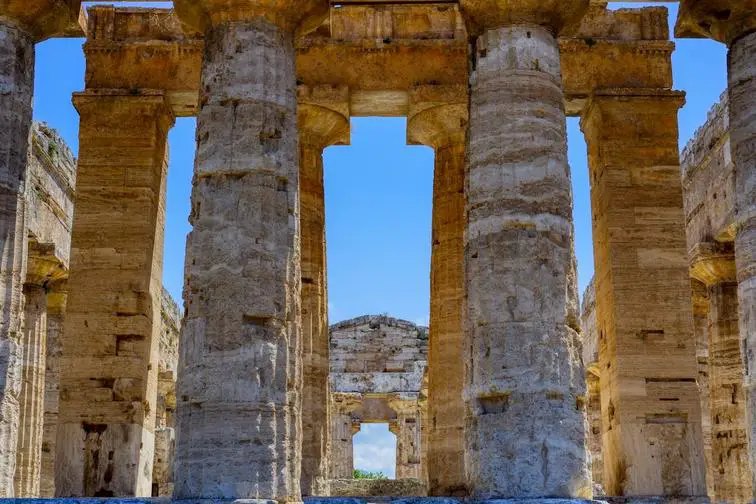
Capaccio-Paestum train station is a train station located in the town of Capaccio, in the region of Campania, Italy.
What to see or do: As a train station, there is not much to see or do here except wait for your train or disembark from it.
However, the station is located just a few kilometers away from the ancient Greek ruins of Paestum, a UNESCO World Heritage Site that is definitely worth a visit.
Don’t miss: The opportunity to explore the ruins of Paestum, which include three ancient Greek temples, an agora (marketplace), and many other fascinating architectural and historical features.
Insider travel tips: If you are planning to visit Paestum, the easiest way to get there is by train and the Capaccio-Paestum train station is the closest station to the archaeological site.
There are frequent trains from Naples, Salerno, and other nearby cities that stop at this station.
Keep in mind that the station is small and does not have many amenities, so it’s a good idea to bring snacks and drinks with you if you’ll be waiting for a train.
14. Lighthouse of Punta Licosa
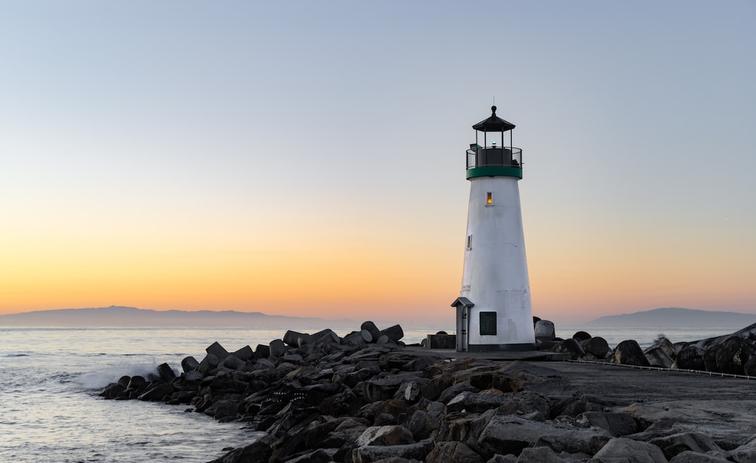
The Lighthouse of Punta Licosa is a historic lighthouse located in Paestum, Italy.
What to see or do: Visitors can climb up to the top of the lighthouse for panoramic views of the Tyrrhenian Sea and surrounding coastline.
Don’t miss: While visiting, be sure to explore the nearby Punta Licosa Nature Reserve, which features beautiful beaches and hiking trails.
Insider travel tips: Make sure to bring comfortable shoes and plenty of water if planning to hike around the nature reserve. The lighthouse can be reached by car or foot, but parking may be limited during peak tourist season.
💪 Support independent web, support us: